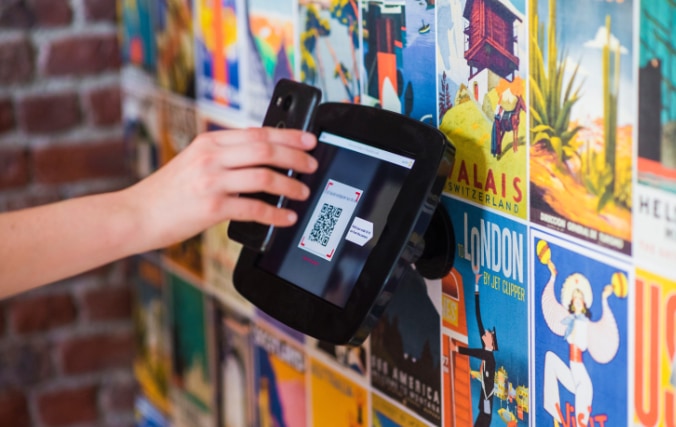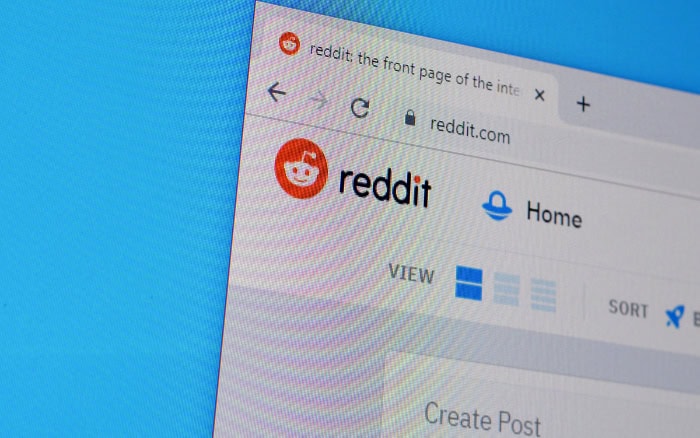QR Codes vs. Barcodes: What’s the Difference?
QR codes and barcodes are both machine-readable symbols that encode information. But what’s the difference between them? QR codes can store way more information than barcodes, making them better for specific applications.
Let’s take a closer look at how they work and when you might want to use each type of code.
What Is a QR Code?
The QR Code was invented in 1994 by a subsidiary of Denso-Wave Inc., the Toyota subsidiary that produces factory automation equipment. The name “QR” stands for “Quick Response,” which is appropriate because the QR code is designed to be scanned quickly.
A QR code consists of a two-dimensional matrix barcode, which can be scanned by an optical scanning device such as a mobile phone or tablet. The black and white squares that make up the matrix code represent binary digits or bits.
Each square in the matrix is called a “pixel” or “module.” The number of modules determines how much data can be encoded in the QR code (e.g., more modules = more bits = more information).
The QR code was designed to hold two types of information: web addresses and other URLs, and any text that needs to be stored in a small space. The QR code can hold up to 4,296 alphanumeric characters.
How Does a QR Code Work?
When a QR code is scanned, the scanning device (e.g., mobile phone) decodes the matrix code and converts it into readable text or data. QR codes can be scanned using free apps that are available for download in app stores. Additionally, new smartphones also have in-built QR code scanners.
What Is a Barcode?
The barcode was invented in the late 1950s by Norman Joseph Woodland and Bernard Silver, two graduate students at Drexel University in Philadelphia. They designed the barcode as a way to speed up the checkout process at grocery stores.
A barcode consists of a one-dimensional line of black and white ink that can only be read when seen from one angle. The line is made up of a series of thin stripes with various widths.
Some barcodes are only black, while some also include white. Barcodes can be read by optical scanners, which convert the light and dark lines into data about the item being scanned.
There are many types of barcodes, including product codes on consumer goods (also called UPC codes, for Universal Product Codes).
How Does a Barcode Work?
When a barcode is scanned, the scanning device (e.g., cash register) decodes the lines and converts them into data.
Because of its design (primarily black and white stripes), a barcode can be read quickly by the automated equipment used in grocery stores.
The Difference Between QR Codes and Barcodes
QR codes and barcodes are similar in that they encode information, but there are a few key distinctions. QR codes, unlike barcodes, are two-dimensional. This implies that a QR code may contain more data than a one-dimensional barcode.
Here are some other key differences:
Scanner
Barcodes require optical scanners to read the lines, while QR codes can be scanned with a camera on a mobile device like a smartphone or tablet. The scanner is built into most devices that use apps for scanning QR codes. However, since technology advances at such a rapid pace, you may now scan barcodes using your smartphone.
Code Size
QR Code Size
Both types of codes are measured by how much data they can hold as mentioned earlier (e.g., more modules = more bits = more information). QR codes can be as small as a few millimeters or as large as several meters. The average QR code is about 2.5 x 2.5 cm. It can hold up to 4,296 alphanumeric characters.
Barcode Size
Barcodes have a limited amount of space, so they are usually only a few inches long. The amount of data they can hold depends on the width of the stripes and the spacing between them.
Applications
QR codes are used for a variety of purposes beyond just product identification. They can be used for marketing, social media, and even tracking parts and tools in factories. Barcodes are mostly used in tracking products at the point of sale.
Types of Information
QR codes store text, a website URL, or vCard contact information that needs to be stored in a small space.
Barcodes store product information, such as the item’s name, manufacturer, and price.
In general, QR codes are more versatile than barcodes because they can store more data and can be used in many different languages. However, barcodes are still more widely used than QR codes for product tracking and identification.
When Should You Use Each Type of Code?
There are a few key things to keep in mind when deciding which type of code to use. QR codes are best for larger amounts of text or data, whereas barcodes are ideal for products and small pieces of information.
Additionally, QR codes are typically readable by more devices than barcodes.
How Do You Create Each Type of Code?
QR codes and barcodes can both be created from apps or online tools.
How To Make QR Codes
The easiest way to create a QR code is by using an app that generates code for you. You can use apps like QR Code Generator, which will generate the code based on your inputted data.
You can also create custom codes by using a QR Code Generator online that allows you to customize the size of the code, background color, and more.
How To Make Barcodes
To make barcodes, you need to use an online tool or app. There are many options available for both mobile devices and computers.
For example, one easy way is to use the free online barcode generator. You can input data and download your custom barcode for free.
What Are the Differences in Appearance?
Barcodes typically have a more uniform and dense pattern than QR codes. This is because barcodes were explicitly designed for optical scanners and are meant to be read from only one angle.
QR codes, on the other hand, allow for a camera or scanner to capture different angles of light reflecting off many tiny pinholes in the code. This is what gives QR codes their great versatility and ability to hold more information.
Final Thoughts on Using either Type of Code in Your Business or Personal Life
QR codes are more versatile than barcodes. If you need to track inventory, use a barcode. But if you want people to engage with your information on their mobile device, use a QR code.
In sum, QR codes and barcodes can both be done effectively but should be used for different purposes. Barcodes are ideal if you need to update a product inventory or print small amounts of information.
QR codes are best for adding a layer of interactivity to your business, e-commerce site, advertising campaign, website, etc., by encouraging engagement-related activities such as sharing and downloading/purchasing something from a mobile device or computer.





